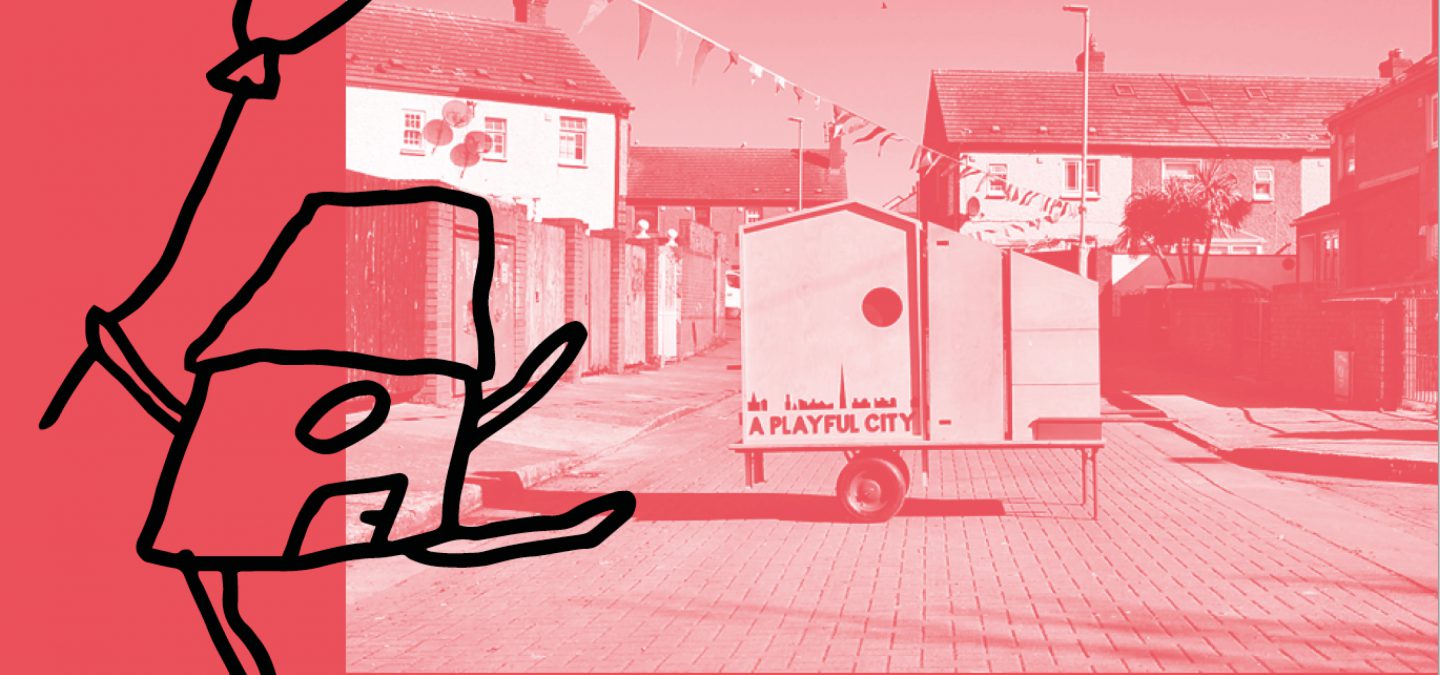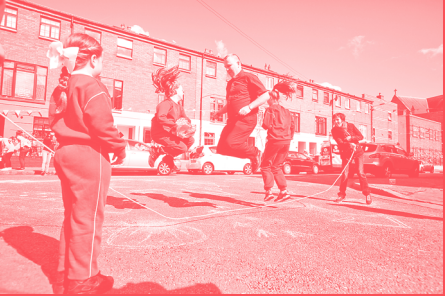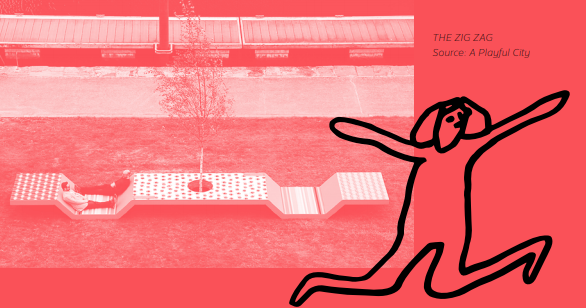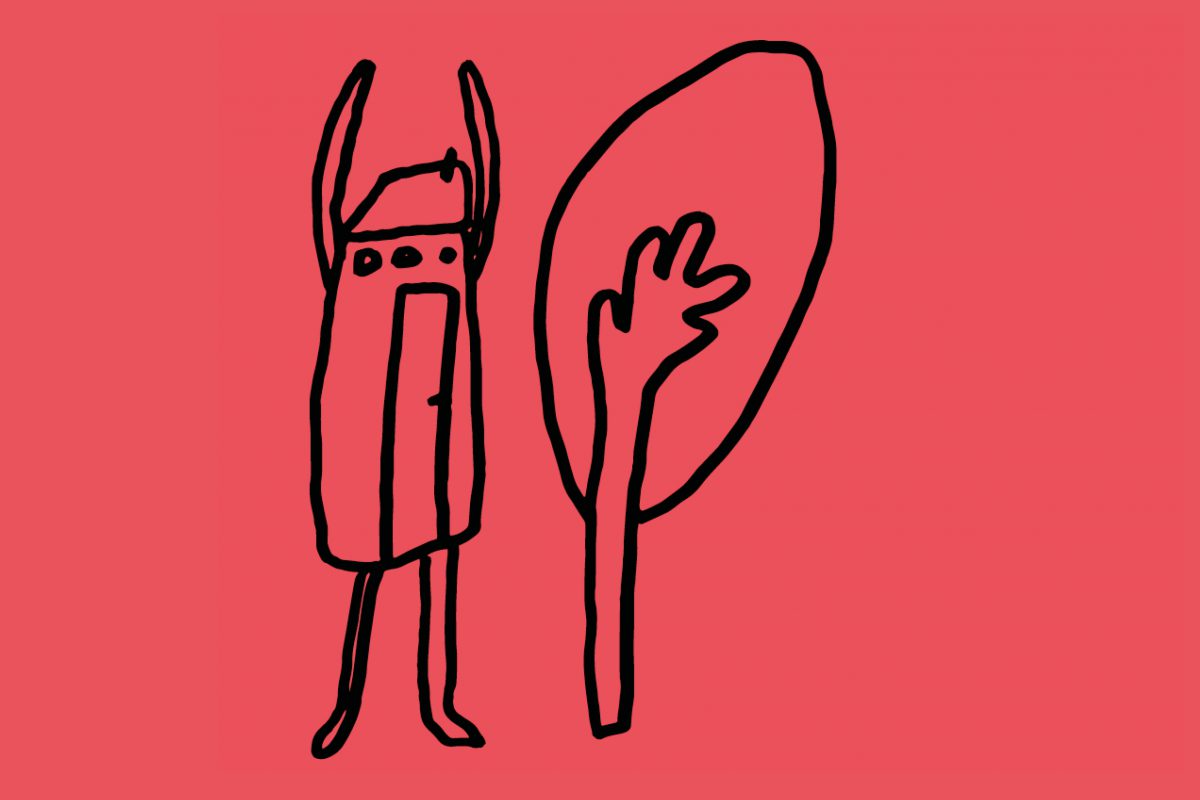
Keep up with our latest news and projects!

Ironically, planning for the future has traditionally silenced the voices of those who have inhabited the city the longest – ageing populations – and those who will be inhabiting cities in the decades to come – children and young people. Cities, as the domain of the adult, rarely focus on the role or agency of children in shaping and prioritizing city planning. The domain of the child (and by default, of its family and caretakers) generally lies on the urban edge, often times in fenced-off playgrounds at the corners of parks.
This essay focuses on the importance and potential of meaningful consultation with children and their communities to achieve better cities for all. Through outlining the approach adopted by A Playful City, the essay highlights the potential of communities to re-humanise the city from the street upwards by designing playful spaces for all ages to enjoy, and by using playful techniques to build engagement. Creating the conditions for healthier and happier urban environments contributes toward increased safety and sustainability and can help counteract some of the exclusion and polarisation that many urban dwellers feel.
The United Nations Convention on the Rights of the Child (1989) was a turning point in creating an impetus for more inclusive approaches to planning. Yet, children’s participation and agency in shaping their home and school environments has been relatively limited in practice (Russell & Moore-Cherry, 2014) mirroring wider limitations in how and to what extent people participate in planning. Where development is taking place, genuine meaningful consultation is often limited and simply tokenistic (Arnstein, 2015). Urban development policies and practice remain largely pre-determined by urban planners with narrow parameters defined by the state and dominant, often corporate, actors (Cardullo & Kitchin, 2018). Participation that does occur is limited or based on choices already pre-defined by particular, powerful actors through formal planning channels. Previous research shows that those with higher levels of social capital can be effective even within these constraints, but those who are already marginalized – such as disadvantaged communities, children or elderly people – find it much harder to have their voices heard and acted upon (Russell et al., 2017).
By 2030, 60% of all urban dwellers will be under 18 years old and this demands the greater inclusion and meaningful consultation of children and their families in the design and planning processes for the whole city. A Playful City advocates for the inclusion of this perspective across the policy cycle and the urban environment, not just for those places such as playgrounds that are formally designated and conceptualised as ‘children’s spaces’.
A Playful City is a multidisciplinary team formed by people with background in architecture, design, urban studies, co-creation, law, marketing and teaching who have been drawn together by their shared passion for making a difference in the city of Dublin through meaningful consultation and playful design. An alternative approach to building inclusion has been trialled to establish common ground between the traditional policy-makers and those who feel the impact of their decisions, and to collaborate on playful urban development that works for all. The goal of the organisation has been to develop spaces where people of all ages, cultures and abilities can freely mix and develop ties that have traditionally been the bond within our cities beginning with how children and young people’s views are mainstreamed in urban design.

“The corridor led to a stairway and below was the inexhaustible adventure of a gravelled yard” (Patrick Kavanagh, The Hospital)
Drawing on the importance of play as a form of learning and engagement (Bento & Dias, 2017), A Playful City set out to reawaken awareness of the beauty and adventure hidden in the banal everyday streetscapes of the city and reimagine them with the surrounding communities as intergenerational playful spaces. Through a people-first approach, both young and old citizens within communities are brought together to articulate how they view their local area, how they would like to see public spaces designed, and to support a sense of community ownership of public space. Harnessing the potential of children and young people as a key resource, working in concert with their own communities and outside stakeholders, is critical to the sustainable development of future cities.
Working with a range of cross-sectoral partners including local schools and community workers, universities, well-recognised charities, architect and design firms, and public and private sponsors, A Playful City has focused its attention on a particular part of inner-city Dublin. The docklands is an area where radical physical transformation has occurred in recent years and there is significant social polarisation between new ‘gentrifiers’ – both residential and commercial – and the more disadvantaged communities that have been engulfed in this change. A design charrette in March 2016 began the process by drawing together over 100 stakeholders from across the city to consider what play means and how it could be meaningfully used to connect and engage with communities. This event gave rise to the idea of designing a mobile device to engage children and adults, and playfully gather local perspectives and views. The design brief highlighted the need for a device that was:
The tool was designed by Sean Harrington Architects with support from Bank of Ireland and is known as the Spiel Mobile. It is a playful and engaging mobile, pop-up consultation device that attracts and engages people of all ages and abilities in a community to come together, and share their insights. Unlike other forms of consultation, A Playful City adopts a people-first approach. One of its main goals is to involve and respond to as much of the wider community as possible. For example, to inform a design hackathon in spring 2018, a set of adult and child personas was produced, based on consultations with real people, to ensure that children and their communities are understood in all their diversity. Samples include Luka – “a five year old who loves football and all he wants to do is play and talk about it all day long” and Karen, who “is 12 and isn’t a big fan of the outdoor play spaces due to the weather. There is no fear of the unknown in a frequently visited play cafe”. Projects support imaginative play and playful imaginings of what the city ought to be. The ideas generated are used to create particular playful spaces, some long-term, some short-term. Since 2017, such consultations have led to a mural project with the Office of the Children’s Ombudsman highlighting the right to play, as well as the Zig-Zag and Playful Street projects described below.

A Playful Street is one of the most dynamic projects which emerged from the consultation processes described above. Working with communities and the local police, this temporary road closure provides a safe environment for children to play outdoors on an inner-city street for a few hours on a given day. While the focus is on supporting children’s right to play, the project also reclaimes the street from the car-based traffic and encourages people of all ages and abilities to come out of their homes and use the streets they live on for social interaction. The Playful City team encourages grandparents and older residents to teach old street games to younger people, building ties within the community and fostering an inter-generational sense of urban belonging. If residents wish to leave or enter their street by car, they can do so at walking speed in order to cause minimal disruption.
By enabling children to do what they do best at no cost and with the support of older members of their families and communities, The PLayful City re-activates urban space and fosters community cohesion. A key element in making this work has been the handing over of control to the community themselves and identifying key people that can help at the outset and provide stewardship for the event. Reminding people of how they played when they were young is rather important. People love to reminisce and it also helps them understand and appreciate play as a basic right for children. Another benefit that can be highlighted is the opportunity older people get to demonstrate the games they once played – thus, elderly citizens have a purpose to participate and it’s fun for them too! At the end of the two-hour event, A Playful City leaves the street toys behind (footballs, kites) to encourage the community to keep going with their street play.

At the Playful Street events, the Spiel Mobile has been strategically placed and actively used to consult on other possible local initiatives. One suggestion was to animate an underused grass strip (euphemistically termed a linear park) adjacent to Spencer Dock on the Royal Canal. Following community consultations and a hackathon in Spring 2018, the Zig-Zag was designed and installed as a playful public seating area. It responded to a demand among the young people of the area for a colourful, welcoming and interesting space to hang out in a part of the city that has become dominated by commercial buildings in recent years. It is multi-functional: people can sit, read, eat, climb, chat at their own pace and leisure. It has encouraged residents and workers at lunchtime to linger and enjoy a part of the city generally characterized by constant mobility. Although it was installed on a temporary basis, Dublin City Council has now offered to find a more permanent home for the installation.

The projects described in this essay highlight the potential of bringing a more grassroots-led approach to urban development and community-building. The communities that have engaged with the process have remarked on its transformative effect in building capacity and inter-generational connections. Since initiating a Playful Street and engaging directly through school children and other youth members and community services, A Playful City has been invited by the community to volunteer at other local events. Children are actively looking for playful street ‘toys’ like hoops and balls and the community around the north-east inner city want to work on more playful streets. The Spiel Mobile has been critical in enabling children and their communities to articulate their desires and participate meaningfully in shaping their own neighbourhoods.
Bridging the connection to policy-makers has been key to effectively advocating for more playful and child-friendly urban spaces. Stakeholders such as the local authority have their own parameters and regulations that they must work with and they usually have very limited, if any, budget for such initiatives. Gaining trust is critical to the implementation of the community vision and this takes time and experience. Through constructive engagement with the local authority, A Playful City has built productive working relationships to ensure that ideas emerging from residents themselves can become reality.
Responding to the need to build more inclusive cities for all, the Playful City process is intended to support the emergence of a more progressive and thoughtful city. This type of city is defined by its people and asks its citizens – of whatever age – what it needs. The Playful City encourages design for children, the elderly, and all generations in between to enhance the quality and attractiveness of the urban environment. It is inspired by the philosophy of Jane Jacobs that “cities have the capability of providing something for everybody, only because, and only when, they are created by everybody” (1961).
